
Graffiti is writing or drawings made on a wall or other surface, usually without permission and within public view. Graffiti ranges from simple written "monikers" to elaborate wall paintings, and has existed since ancient times, with examples dating back to ancient Egypt, ancient Greece, and the Roman Empire.

Leonard Hilton McGurr, known as Futura, and formerly known as Futura 2000, is an American contemporary artist and former graffiti artist.

Street art is visual art created in public locations for public visibility. It has been associated with the terms "independent art", "post-graffiti", "neo-graffiti" and guerrilla art.

The Freedom Tunnel is a railroad tunnel carrying the West Side Line under Riverside Park in Manhattan, New York City. Used by Amtrak trains to and from Pennsylvania Station, it got its name because the graffiti artist Chris "Freedom" Pape used the tunnel walls to create some of his most notable artwork. The name may also be a reference to the former shantytowns built within the tunnel by homeless populations seeking shelter and freedom to live rent-free and unsupervised by law enforcement. The tunnel runs approximately 2.6 miles (4.2 km), from 72nd Street to 124th Street.

Victor Ash, also known as Ash, is a Copenhagen-based artist originally from Paris, France. Ash primarily works on canvas, lithography, and sometimes installations. He has exhibited regularly in various museums and galleries around the world since the late 1980s.
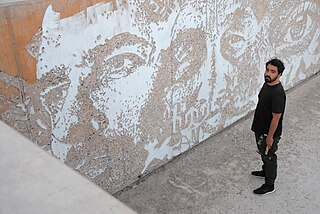
Vhils is the tag name of Portuguese graffiti and street artist Alexandre Manuel Dias Farto.
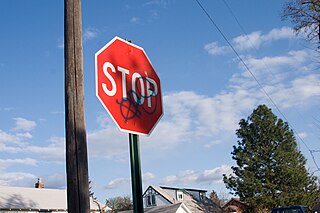
Graffiti are writing or drawings scribbled, scratched, or sprayed illicitly on a wall or other surface in a public place. Graffiti ranges from simple written words to elaborate wall paintings. Graffiti, consisting of the defacement of public spaces and buildings, remains a nuisance issue for cities.

Darco is a graffiti-artist who lives and works in Paris (France).

Graffiti in Iran consists of different styles. Some are slogans painted by governmental organizations, and some are works of art by regular citizens. During the last few years, Tehran Municipality has been drawing graffiti in order to beautify the city. Much governmental graffiti regards the Iranian Revolution, Islamic Republic of Iran policies and The Politics of Resistance. Pro-democracy activists are also continuing a political graffiti campaign in Tehran. Islamic graffiti can also be seen around the city. Graffiti has long served as a medium of expression through Iran's complicated political history.

The Chicano Art Movement represents groundbreaking movements by Mexican-American artists to establish a unique artistic identity in the United States. Much of the art and the artists creating Chicano Art were heavily influenced by Chicano Movement which began in the 1960s.
In recent years, Atlanta has been called one of the USA's best cities for street art. Street artists have prominently created murals in Krog Street Tunnel, along the BeltLine, and in neighborhoods across the city. The street art conference, Living Walls, the City Speaks, originated in Atlanta in 2009.
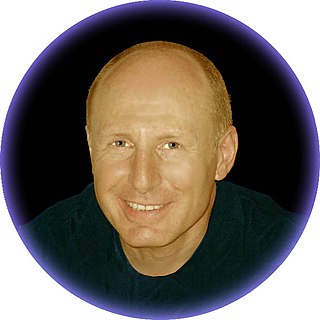
Frédéric Gracia is a French artist, who is known for his trompe-l'œil murals, often in a hyperrealistic style and often on large exterior surfaces such as water towers and industrial chimneys. He calls himself a peintre-alpiniste (climber-painter) because he uses rope access techniques such as rappelling to create large outdoor murals.
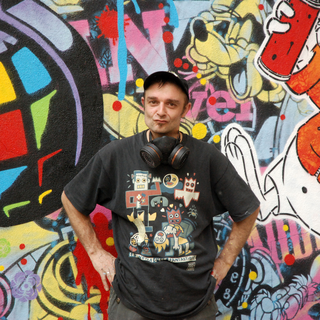
Speedy Graphito is a French painter who is considered a pioneer of the French Street Art movement.
JonOne, also known as Jon156, is an American graffiti artist. Originally from New York, he lives and works in Paris.

MadC is a graffiti writer and muralist. She was born in Bautzen, Germany, and is most known for her large-scale, outdoor artistic paintings.
Add Fuel is Portuguese visual artist and illustrator Diogo Machado. With a degree in Graphic Design from Lisbon's IADE – Institute of Visual Arts, Design and Marketing, he spent a few years working in design studios in Portugal, followed by an eight-month stint in Munich, Germany. Since 2007, he has been focusing exclusively on his artistic work. Starting out under the full name Add Fuel to the Fire, he first created a dark yet exuberant visual universe populated by a cast of slimy, eccentric and joyful creatures, influenced by a variety of interests ranging from video games to comics, animation, sci-fi, low-budget B films, designer toys, and urban visual culture.
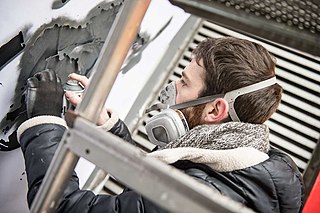
Kurar is the pseudonym of a French artist whose work often addresses complex social issues such as post-urbanization, climate change, terrorism, and violence in local and global terms. In his practice, the artist highlights the important ideas and details by utilizing contrast, mainly between gray, black and fluorescent colors to make the subject and messages of the piece come out intensely. His witty and clever artworks have been included in numerous individual and collective shows worldwide.

3Steps is a German-based contemporary artist collective between the twins Kai Harald Krieger and Uwe Harald Krieger and Joachim Pitt.
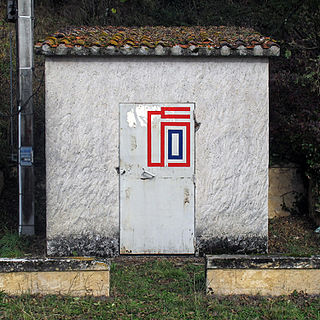
Eltono is a French artist born in the suburbs of Paris in 1975. His work is mostly influenced by his graffiti background. He started painting around 1989 in his neighborhood mostly on train tracks and highway walls. "Eltono focused mainly on the railway lines to the northwest of the city, painting in the traditional silver and black, block letter Parisian style." He lived in Madrid from 1999 to 2010, then in Beijing from 2010 to 2014 and since 2014 lives in the south of France. In 1999, while living in Madrid, he started painting abstract symbols with tape and acrylic paint. "It was then that he developed the colorful geometric box patterns for which he is now known." "As Eltono himself suggested, his move away from traditional graffiti was produced so as to find a harmony with both the material and the social body of the city ." "Eltono also rejects conventional letterforms in favor of a minimalism device with which to negotiate space."
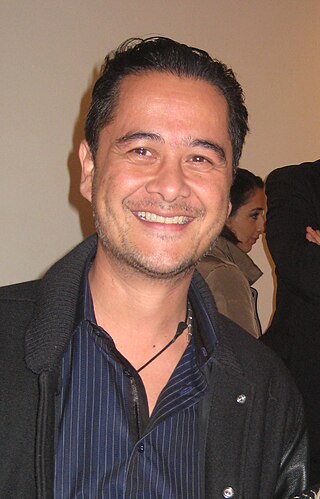
Cyril Kongo, is a French painter and graffiti artist.




















